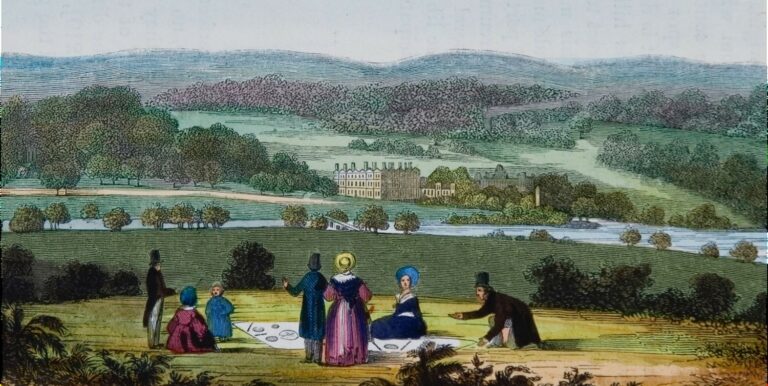Born in 1752 in Bury St Edmunds, Suffolk, Repton lived a life threaded with both aspiration and failure. After dabbling unsuccessfully in trade, he found his calling in landscape design relatively late, around the age of 36. It was, he admitted, the ideal occupation for a man of taste but limited means—someone who could imagine greatness in a borrowed coat and hope to be paid for it. He styled himself the successor to Capability Brown, but where Brown swept away all for the sake of naturalism, Repton sought to blend the picturesque with the practical.
Repton’s genius lay not in revolution but in reconciliation. He believed houses should belong to their landscapes like an oak to its grove—rooted, connected, and of the same spirit. His approach was gentler than Brown’s grand gestures: rather than vast lakes and undulating turf, Repton gave us terraces, framed views, and winding carriage drives that unfolded a story with every turn. At Woburn Abbey, he created a harmonious journey through deer park and pleasure ground; at Blaise Castle, he turned rugged gorge into a painterly vision.
He was also something of a landscape critic, railing against the extremes of the sublime and the wild, and the ‘meagre’, overly mathematical designs of imitators. In his Red Books—an extraordinary fusion of art, architecture, and horticultural suggestion—he addressed not only the rich patrons but their posterity, always with an eye to taste, utility, and moral virtue.
Yet Repton’s career was not without sorrow. He was often underpaid or uncredited. Late in life, a carriage accident left him disabled, forcing him to conduct his visits from a bath chair. Still, he pressed on, dictating ideas to his sons and continuing to shape the English countryside with paper and ink. He died in 1818, buried at Aylsham beneath a simple stone, inscribed: “Not like Egyptian Tyrants, consecrate / Unmixed with others shall my dust remain.”
Now, wandering a path in Sheringham, where rhododendrons tumble and great oaks rear skyward, Repton’s legacy seems etched into every prospect. His work, rooted in the ideals of the English Enlightenment, endures not only in country estates but in the very notion of landscape as narrative—human, readable, and cherished. The earth remembers such hands, and in the quiet curves of these designed spaces, so do we.





